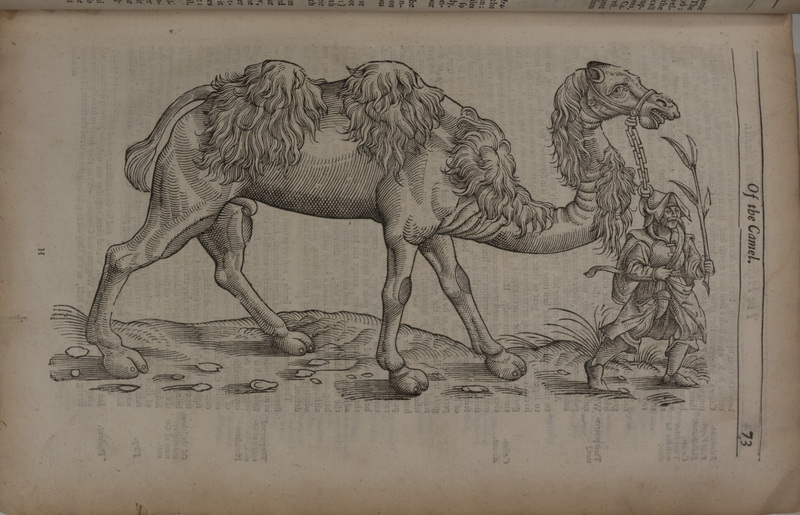Camel
The illustration of a camel takes up one entire page of the book as if it is demonstrating its large size in real life. Nevertheless, the presence of a camel is rather being controlled by a figure next to it who is holding onto the camel by the chain. A camel is not an animal for fight, according to the text that describes the animal, and, therefore, it is used for carriage, which is well presented as a visual representation in the illustration. The figure next to the animal is luring the camel with, presumably, a stack of barley, and the camel is trying to reach out to the stack, following the track of the figure as they move along together.
More than half of the text about a camel is based on illustrating its cultural aspects, instead of scientific observation. The scientific observation takes up only less than one page out of total of three pages about a camel. Gesner describes that this animal rages when its keeper had him have a sexual intercourse with his own mother, which provides a chance to look at this animal as an instructive one. Camels denying sexual intercourse is also mentioned by Pliny the Elder.
This comprehensive illustration suggests every single detail of the camel such as its physical appearance, personality, its submissiveness to human being, habitats, the food, and associatd insctructive texts, which was the foremost purpose of the book -- to deliver vast amount of knowledge.
